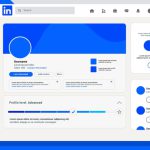Today, web applications have become an integral necessity for businesses to better their operations, reach customers, and maintain competitive advantage. Whether a new business or well-established, a custom web app can give your business a mass boost regarding its online potentials. What a web app development cost includes for proper projection of a budget and planning must be understood. This guide will, therefore, take you through the most essential considerations that determine how much it will cost to build a web app.
A web application is a software application that operates on a web server and provides access for remote users via a web browser. While the usual desktop applications must be installed on every device, a web application can be accessed from any location, at any time, without any gain or loss in flexibility or scalability.
Some of these applications may do simple things such as filling out a form or do much more complex functions that involve things such as online banking and project management. These applications are often developed using front-end and back-end technologies, that is, client-side and server-side, and often require database connections, APIs, and third-party services to work effectively.
The flexibility of web apps makes them perfect for any sized business. Nonetheless, the complexity and functionalities you want to implement will determine the overall cost.
The scope and complexity of your web app influence its overall cost. There is wide variation in features, functionality, and design that web apps present.
Simple Web Apps
They are plain websites with minimal functionalities and features. Normally, they contain some simple user interfaces, reduced number of pages, and traditional navigation. For example, a basic e-commerce site or a landing page falls in this category. In the light that they are not that complicated, those simple web applications need relatively fewer hours of development work and fewer resources. Thus, their expenses may be kept low.
Stunning Web Apps
High-complexity web applications require something more than common functionality-for example, managing huge traffic amounts, providing for the complex user interaction, or integrating dozens of third-party services. This could be social networks, SaaS applications, or high-level business portals. High-level expertise and more time for development entails higher overall expenditure. The greater the scope, the more resource-intensive the project would be in terms of ensuring smooth performance and scalability.
The makeup of your development team is another influential factor in the cost of your web app. Depending on the scale and complexity of your project, you can choose from a variety of types of development teams.
Having an in-house team will give you direct full control over the development process. You can coordinate, rework, or align them with your business goals easily. However, hiring an inhouse team is not usually a day-to-day activity as it involves hefty long-term investments like salaries, benefits, and use of office resources. This option is mostly apt for large companies with constant development requirements.
Development agencies are balanced. They give a comprehensive package: design development, testing and support during post-launch phases. Such companies usually hold the principle of a team of experts who work in tandem to ensure that the project is delivered on time and at a high standard. Agencies cost more than freelancers, but, on the other hand, they work much more structured and professionally, minimizing the risks of miscommunication or delays.
Another important factor that dictates the development cost is the choice of the technology stack, which basically refers to the programming languages, frameworks, and tools used to build your web application.
In most cases, open-source technologies such as React, Node.js, or Python are free and widely adopted, so it is clear about the cost-effectiveness for most projects. However, proprietary technologies or frameworks may also incur a license fee that adds further to your costs. What will determine is whether to use open-source or proprietary technologies, according to the requirements of your app and how deep your pocket is.
The front-end refers to what the users touch directly; the back-end refers to server-side logic and database management. A very basic web app with a mere simple front-end and very simple back-end could be easier and even faster to develop; however, higher complexity increases the cost in development if dynamic interactions, real-time updates, or integration with other services are involved.
A good, intuitive user experience is important to keep the users and engage more. Another place where costs will be variable is design.
A very basic or simple web app doesn’t necessarily require rich visual appearance. The design would not be very customized. Most of the times, the templates are readily available for the coding. For simple apps, that might be sufficient and helps in keeping the cost in a manageable range.
For complex applications, whenever you think that your application needs a specific unique design, then you have to create custom design. This means designs especially for your brand and its user experience. These are bespoke animations, icons, layouts, including much hard work, time, and also with UI/UX experts’ involvement. It makes it a bit costlier, but the result will be worth it-the user experience looks more professional.
Features and functionality you want to include in your web application. These are the critical determinants of the development timeline as well as the cost.
User authentication such as the login/signup; search functionality and data submission in the form of forms or file uploads are typical features that are easy to develop. This is because these are the fundamental features on which most of the web applications are based and do not consume many development hours.
More complex features such as real time chat, integrations of payment, analytics dashboards and API integrations take time to build and cost more in terms of the development effort. Advanced features usually call for more advanced expertise by the developers, meaning longer time and even cost. The more features you want, the more time will be taken to build it, test and integrate it thus increasing development cost.
The first launch of your app online is just the first step. Once launched, support and maintenance require the web app to remain running properly.
This involves updating the app with new versions of software so as to ensure compatibility, correct bugs, and apply security patches. Proper maintenance prevents loss of performance and ensures smooth working for all end users.
As your web app grows, you will probably want to add new features or enhance existing ones. Ongoing support for these updates, through a retainer agreement or as needed, will allow your app to grow and evolve alongside changing needs in your business and ensures it stays competitive.
Probably the most persistent cost you will have to pay is that of web hosting, which will keep your app online and available to users. The type of hosting service you utilize varies the cost, but the best service depends more on the size and requirements of your web app.
Shared hosting is the lowest-cost service, but this means that you may be quite limited in the performance by using such a service for an application when either the number of users is large or traffic is heavy.
Dedicated or cloud hosting provides better support for web applications that require more bandwidth, security, or more scalability in their web application. Options such as AWS, Microsoft Azure and Google Cloud are much more reliable since they provide better capabilities and scalability for a higher cost.







